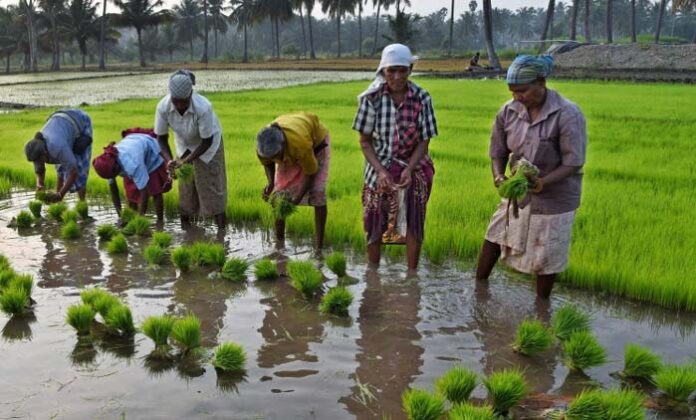Traditionally labour input is vital in Indian agriculture. Rural economy in India witnessed a prolific growth of agricultural workers, cultivators and agricultural labourers during the planned era and most of them remained as most neglected lot in the country. The green revolution no doubt made the early birds and big landlords prospered. The recognition of agricultural sector as one of the crucial component in economic development received only step motherly treatment from policy makers and planners.
Also Read : The sad story of sand mining in Andhra Pradesh
Non availability of agri. labourers
Recently a friend of mine from Godavari district in Andhra Pradesh expressed deep concern regarding non availability of agricultural labourers unlike in the past for the farm work during agricultural seasons when they are most needed. He owns a five acres plot and of late experiencing the pressure of running the agricultural pursuits. Thus he is not a big landlord nor a small farmer. He swears that non availability of labour will become an increasing phenomenon in India. But to get a clearer picture we need to understand the characteristic features and the typologies of agricultural labourers. At the outset their income is low and their employment is irregular. They have no skills or training. Alternate employment opportunities in their respective rural settings are particularly nil and a majority of them come from scheduled castes and scheduled tribes.
Also Read : Backdrop of Indian Agriculture
Two types of landless
The landless and petty farmers constitute the agricultural labour force. The landless are two types – permanent labourers tagged on to the cultivating households and causal labourers. Further the second group can be divided into three sub strara- cultivators, share croppers and lease holders. All these causal labourers unlike their counterpart industrial workers are not at one place and are scattered in the villages. Thus they are not organized and have no common voice. The structures of self contained rural economy and the continued thinking of caste drawn occupational land tenures have complicated the agricultural sector in the country with increased number of land owners and lack of modernization Further there are several constraints for modernization of agriculture in advanced countries.
Also Read : Social Sector Investments
Demand and supply remains unchanged
Even today if looked at demand and supply of agricultural labourers the scene has not changed. Sufficient number of labourers are available. But only in sowing and harvesting times there appears to be near full employment for them and sometimes scarcity of their availability.
Migration of labourers
Migration is surfacing as another important aspect to be concerned with. Agricultural labour migrating to agriculturally rich areas from other districts and States has been common during agricultural seasons. More so is the migration of labour to nearby urban areas for other works like construction activities is on the increase. Among the youth, agricultural labour is becoming an unacceptable avocation in preference to remaining unemployed.
Also Read : Are Reforms in Higher Education Structures welcome?
Better livelihoods
Unless appropriate measures are taken to better the livelihoods of agricultural labourers in right earnest and provide additional employment and skill-training opportunities in the villages for them my friend’s apprehensions may soon come true.
Also Read : Dire need of Sewage treatment




